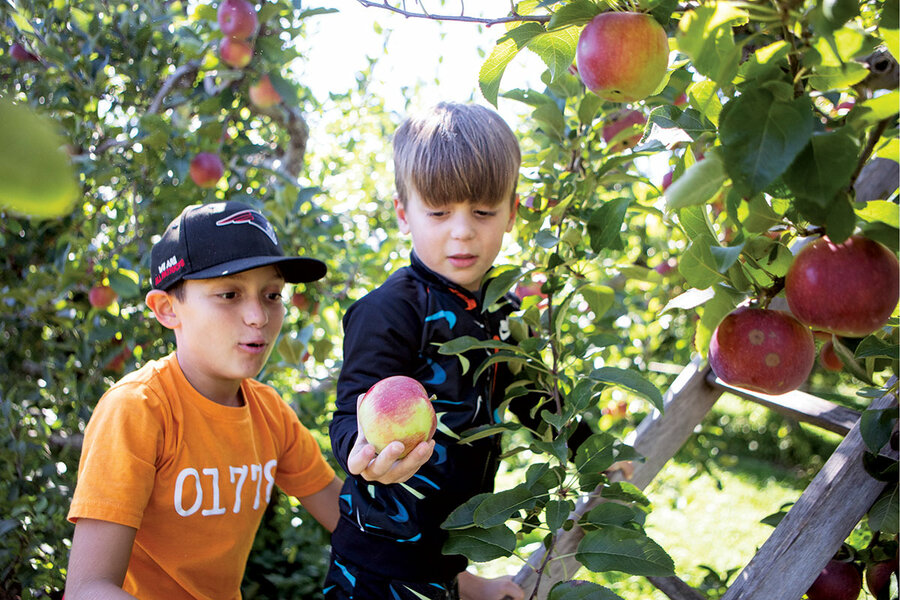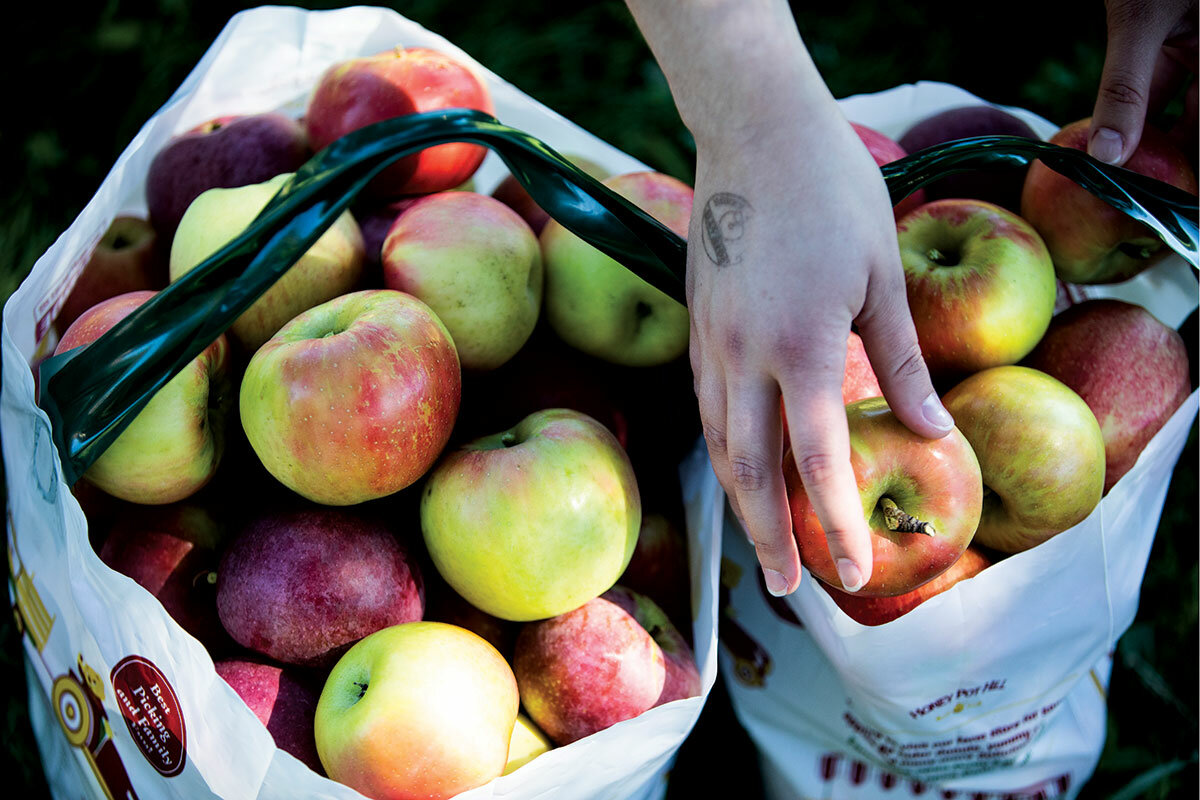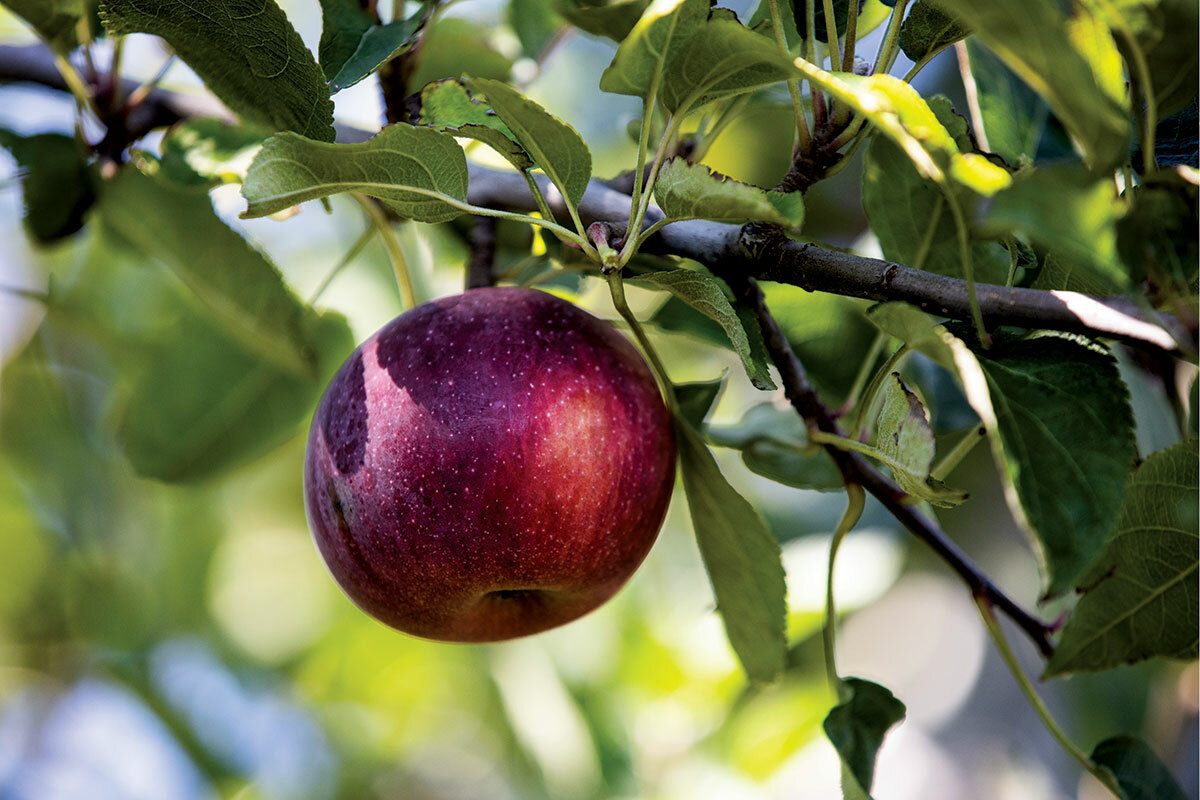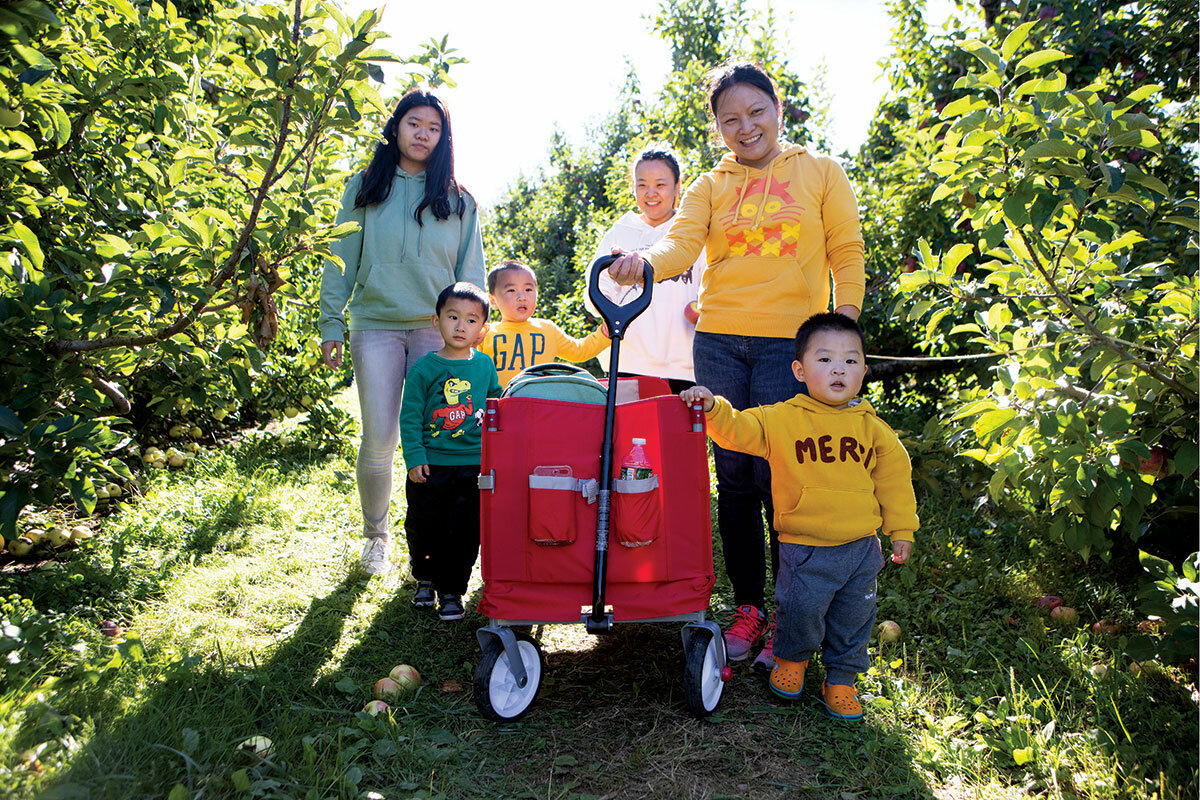In Pictures: The sweet embrace of an autumn tradition
Loading...
| stow, mass.
One sunny Saturday, a couple meander through orchard rows grasping opposite ends of a stick, two full harvest bags of apples slung between them. They pass other families, spaced along the length of the grassy path, cast in afternoon sunlight dappled by the squat trees. The pickers talk in hushed tones, searching for the right adjectives to describe the immense flavor of the half-eaten fruits in their hands.
Nearby, a tractor drags a long wooden platform piled with people and hay bales. Its driver grips a yellow apple between his teeth as he stands up proudly, hands on hips. His teenage assistants usher guests on board and trade side-eyed smiles, silently acknowledging their shared responsibility over the hectic scene before them.
Six-year-old Charlotte is a veteran apple picker. “We come here almost every year,” she says. “The ones we just picked over there are my favorite, but I also like the sour ones.”
To the uninitiated, the apple-picking pilgrimage may seem an odd way to spend an afternoon. Are the entry fee, long line of cars, port-a-potties, and parking lot politics really worth their weight in autumn fruit?
For the crowd at Honey Pot Hill in Stow, Massachusetts, the experience seems to capture all the metaphorical significance of those few short months between summer and winter when the sun is warm and the breeze is cool, when the impermanence of the seasons is a tangible presence in the air.
“Do we have to get off here?” Charlotte asks her parents. “But it’s so much fun.”










